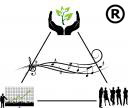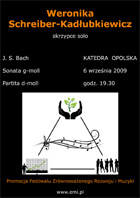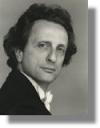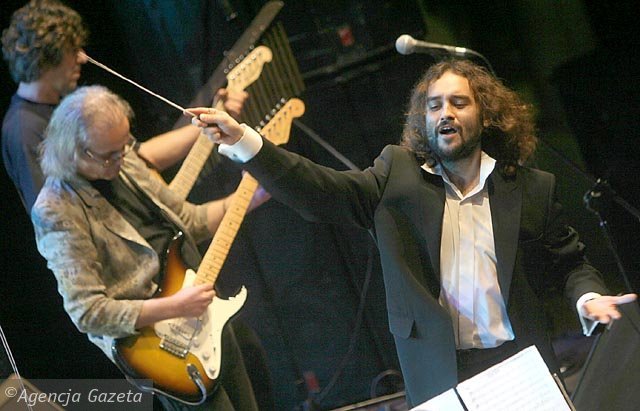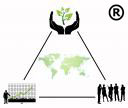Nobel, climate and concerts
Wanda Pazdan
20 Nov 2007
Soon, Al Gor and the Intergovernmental Panel on Climate Change (IPCC), established 19 years ago, will receive the Nobel Peace Prize. The Norwegian Nobel Committee justified granting the Prize as follows: “for their efforts to build up and disseminate greater knowledge about man-made climate change, and to lay the foundations for the measures that are needed to counteract such change.”
This fact awakens in me some reflections and memories.
Sixteen years ago, for the first time in my work, I used the IPCC guidelines. At that time I used working materials to the first copy of IPCC Guidelines for National Greenhouse Gas Inventories. In 1993 and 1994, I led the national air emission inventory CORINAIR’90, under the agreement between ATMOTERM S.C. company and the European Commissions Environmental Directorate General (DGXI). It was implementation of a new methodology of air emission inventory-a big challenge for me and for my company involving huge satisfaction from the performed work.
It was a nongovernmental air emission inventory and included 8 groups of gases. Carbon dioxide, methane and nitrous oxide emissions inventory was to be compiled according to the IPCC methodology, other gases – according to the UNECE-CORINAIR methodology. The air emission inventory proved to be the first one comparable to those compiled in other countries. Twenty nine European countries participated in the project. The European Commission regarded Poland CORINAIR’90 as one o the best inventories compiled in Europe. In Opole, on the premises of ATMOTERM S.C. company, I organized a Seminar with participation of representatives of the Ministry of the Environment, Chief Inspectorate for Environmental Protection, state scientific institutes and Polish research units which took up the issues of air emissions at the request of the Ministry of the Environment. During the Seminar I defended the results of the inventory. Upon such approval, I sent the report to the European Commission and my company published it in a book form under the auspices of the Ministry of the Environment. The table with the inventory results was for several years published by the Central Statistical Office. The Ministry used the results of the paper in the Governmental Report for the First Conference of the Parties of the United Nations Framework Convention on Climate Change (COP1). The CORINAIR’90 report received “The Best Product of the Opole Region”award in 1994.
I took part in the UN Task Force On Emissions Inventories and Projections (TFEIP UNECE). During the years 1994 to 1996, within ATMOTERM company, I participated in the Phare project Design of the System of Transferable Emission Permits and Implementation of the Pilot Project in Poland. Some of the solutions in the project suggested by me are implemented in the current European CO2 emission trading. Between 1998 and 2000, within ATMOTERM sp. z o.o. company, I led an international project Phare Topic Link on Air Emission (PTL-AE). Its main objective was analysis of the situation and technical assistance in 13 Central European states seeking accession to the EU, preparation of data from those countries in the format required for the reports of the European Environment Agency (EEA). The work, among others, was related to greenhouse gases and IPCC methodology. It involved cooperation with the EEA, ETC/AE and its network EIONET. In 2000, as a eader of Phare Topic Link on Air Emission, I took part in the meeting of IPCC experts in the India Habitat Centre, New Delhi, where I talked on the subject “Achievements in the field of emission factors.” One of the main goals of my report was to convince the listeners that plants which manufacture the same goods, have different emissions per production unit. At that time, that was a new idea for many experts, not only those from Third World nations. From 2004 to 2006, I worked in the EU project “Support to Air Monitoring,” in Bosnia&Herzegovina, dealing also with the issues of emission inventory, including IPCC methodology. I proved that current statistical data practice involved in EUROSTAT, and consequently, in the Central Statistical Office, should be changed, if we want to have good quality emission estimates at the country level. The principles of statistical data collection do not keep up with changes in economy. The development of small and medium-sized businesses did not bring parallel changes in the statistical system.
Reduction of CO2 emissions is one of the main, joint efforts in the EU and may prove to stimulate new technologies and behaviors.
The next conference of the countries which are the signatories of the United Nations Framework Convention on Climate Change UNFCCC (COP), will be held in December, this time in Bali.
In 2007, Nobel Peace Prize winner organized Live Earth concerts, a series of musical events for the purpose of drawing more attention to the greenhouse effect and growing CO2 emissions into the atmosphere. Global warming will contribute to even more intensive heat waves and devastating droughts in some regions (e.g. in southern Europe or northern Africa), and floods in other areas (like northern Europe or southeast Asia), as well as melting glaciers, rising sea levels, stronger and more frequent gales, thunderstorms or tornadoes. The IPCC Panel confirmed with over 90 percent probability that by developing industry we cause overheating the Earth.
The press reveals Al Gore’s high bills for electricity suggesting that the Nobel winner should probably apply the principle “physician, heal thyself” before anything else… But do the media justify such conclusions? No information is provided about power consumption per surface area unit of the house, office, or person. Providing comparable information is important not only at the level of negotiations between two countries!
Since 2007, apart from consulting, I have been organizing and managing artistic events, like concerts. For some time, I have been planning a series of partly oral, partly musical events for promotion of sustainable development.
